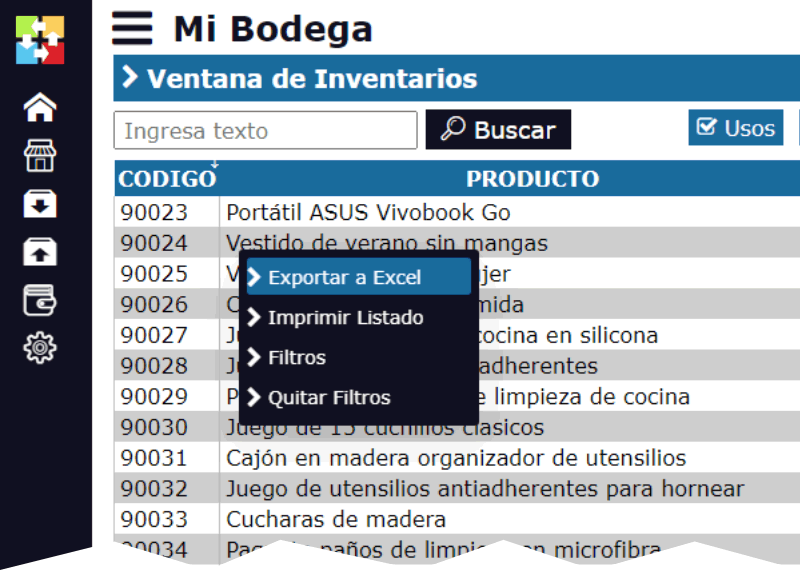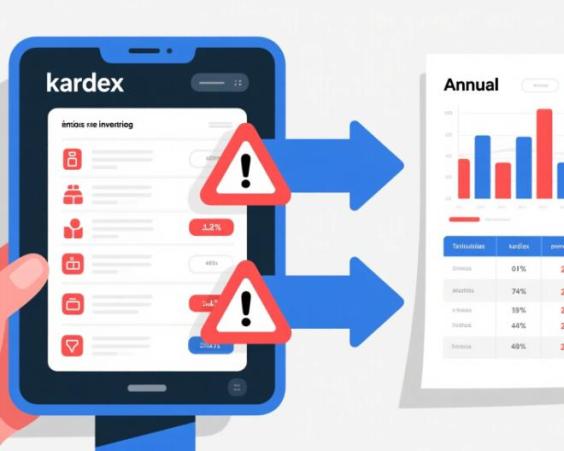Preventing Theft in Your Inventory: Tips and Strategies
When it comes to losses in an inventory, one of the most critical factors to consider is theft. The theft of goods is a problem that affects both small stores and large companies, and can come from internal sources (employees) or external sources (customers or people outside the organization). Avoiding theft in your inventory not only helps reduce financial losses, but also contributes to maintaining the stability and security of your business.

Next, we explore some key strategies and tips to prevent theft from affecting your inventory:
1. Implement an Inventory Control System
The first line of defense against theft is having a reliable and robust inventory system. A good system should allow you to keep detailed control of entries, exits, locations, and movements of products. By using a cloud-based inventory software, you can review any changes in stock in real time and detect irregularities before they become a bigger problem.
In addition, a system with detailed records makes potential perpetrators (internal or external) think twice before committing theft, as they know that every movement is being monitored.
2. Use QR Codes and RFID Tags
QR codes and RFID tags facilitate automated inventory management. By scanning each code or tag, you can keep accurate track of each item, making it difficult for products to be stolen without leaving a trace. These systems also allow for the identification of counterfeit, relabeled, or tampered products, adding an extra layer of security.
3. Design Clear Policies and Security Protocols
Establishing clear policies and protocols for inventory management and security within the warehouse is crucial. Define who has access to certain areas, how products should be handled, and what procedures to follow to report suspicions of theft or loss.
For example, a permission system within the inventory software can limit which users have access to certain operations, such as creating invoices, making internal transfers, or registering sales. This makes it easier to maintain strict control and reduce opportunities for theft.
4. Implement Regular and Surprise Audits
Regular audits help maintain constant control of the inventory. If audits are scheduled regularly, it is less likely that someone will risk stealing, as they know that differences will be detected quickly.
However, to maximize the effectiveness of this strategy, it is recommended to carry out surprise audits at random times. These unexpected reviews tend to be more effective in preventing internal theft, as the perpetrators do not have time to cover their tracks.
5. Install Security Cameras and Surveillance Systems
The mere presence of security cameras can deter thieves. Make sure the cameras are located in strategic points of the warehouse or store, especially in high-risk areas such as access doors, dispatch points, and storage areas for valuable products.
In addition, having a good monitoring system not only allows for the detection of theft, but also for the investigation of any inventory anomalies and the review of images to verify what happened.
6. Access Control and Employee Supervision
Implementing access control systems that register who enters and leaves each area is essential. Additionally, assigning supervisors responsible for verifying compliance with security policies and monitoring movements within the warehouse can prevent many incidents.
Promoting a culture of transparency and trust with employees is also important. When employees feel they are part of a team and value honesty, they are less likely to engage in dishonest behavior.
7. Train Your Staff in Theft Prevention
Training and raising awareness among staff about theft prevention is key. Conduct periodic training sessions to teach employees how to identify suspicious behavior, how to act in case of detecting theft, and what to do if someone requests confidential information about the inventory.
8. Record Sales in the Inventory System
When managing sales through platforms such as Amazon, eBay, or other marketplaces, it is important to record these transactions in your inventory system. This way, you can maintain accurate control of what has been sold, at what price, and when, avoiding discrepancies in the inventory.
Even if you do not have a physical store, keeping track of inventory for online sales is crucial to avoid errors or theft. By recording each sale and adjustment in a cloud-based inventory system, you can access the information from anywhere and verify the status of your products.
9. Make Controlled Transfers and Adjustments
If you need to move products between different locations or make inventory adjustments, make sure to do so with complete control and registration in the system. A cloud-based inventory software allows for transparent transfers and adjustments, preventing products from "disappearing" during the process.
10. Use Alarms and Sensors on High-Value Products
For high-value products, such as technology or expensive items, consider installing sensors and alarms that activate if the product leaves the warehouse without the corresponding sales process. This method is highly effective in reducing theft of expensive items.

Protect Your Inventory with Intelligence and Technology
Proper inventory management is more than just counting products and recording them. Security should be an integral component of the inventory management strategy. Take advantage of available technological tools and best practices to reduce losses due to theft and ensure the viability of your business.
Remember that a good cloud-based inventory system not only helps manage stock, but also prevent and detect theft more efficiently. Whether you have a physical store, sell online, or both, keeping your inventory secure is essential for the success and peace of mind of your business.





